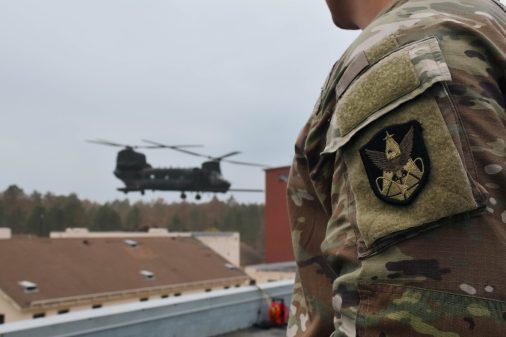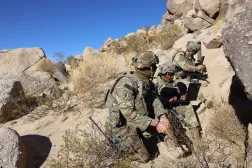‘This is not enough’: Army grappling with increased demand for space capabilities, personnel
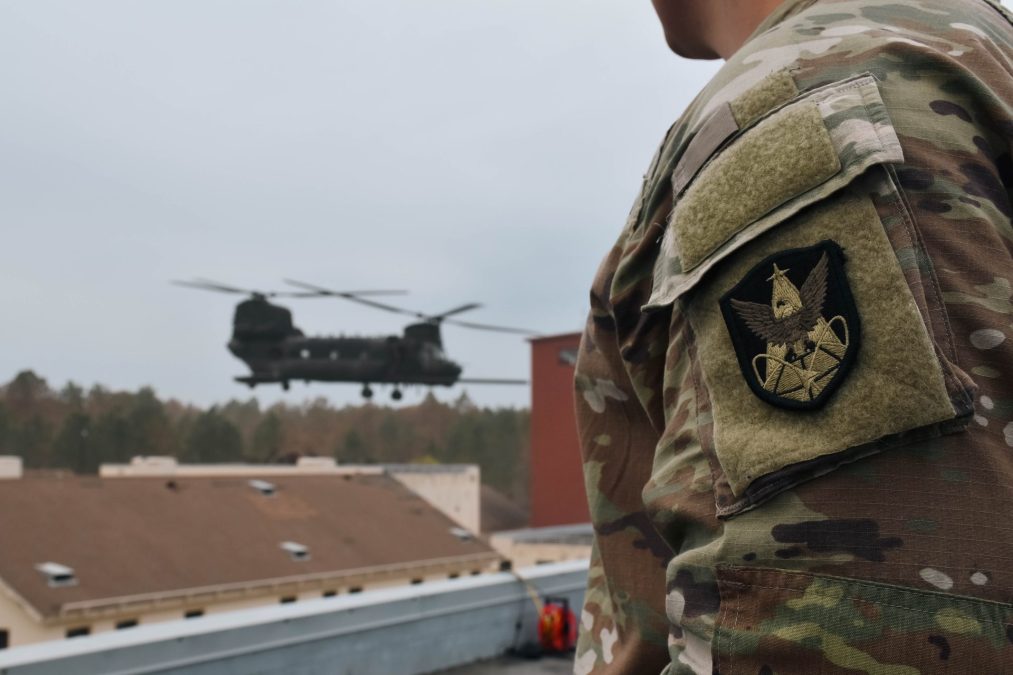
Since the creation of the Space Force in 2019, the Army has been redefining its mission in the space domain and transferring several of its focus areas to the new service. Now, Army Space and Missile Defense Command is taking on the daunting task of adapting how it leverages space systems for its own operations, as well as investing in capabilities and growing its personnel.
The Army published its new space vision in January, doubling down on the importance of the service’s ability to conduct its own space ops and the need to grow its formations. The document emphasized the need for land-centric, expeditionary equipment designed for large-scale multidimensional operations for space missions.
But with an eye on executing the vision by 2030, the organization is working through challenges in meeting demands for new capabilities and more space soldiers.
“As I look at the priorities within the command as we move forward, probably our top priority is how do we deliver that capability responsive to the warfighter?” SMDC commander Lt. Gen. Sean Gainey said this week during a panel at the annual AUSA conference. “How do we continue to get after more tactical solutions that allow our soldiers to maneuver around on the battlefield at different areas, different times [with] smaller weight platforms? … How do we build the expertise within our soldiers so that we’re not borrowing manpower?”
Developing space soldiers
Over the last 25 years, the Army has maintained a functional area of 40 space operations officers, while also borrowing enlisted troops from other military occupational specialties. Given new demands to add and maintain experienced space soldiers, the service is reconsidering that resourcing model, Col. Donald Brooks, commandant of SMDC’s Space and Missile Defense Center of Excellence, said.
“Given the increasing dependency on space capabilities of the Army of the future, we realize that this is not enough and it’s insufficient,” Brooks said. “So, this ‘temporary space soldier’ … has proven not able or capable to meet current and future operational demands, and negatively impacts our ability to sufficiently answer the call in today’s operational environment.”
As part of the Army’s larger ongoing force structure transformation, the service plans to grow its space warfighting formations to include nine companies and 27 platoons. Those units will be the 1st Space Brigade, additional multidomain task forces (MDTFs) and new theater-level formations called theater strike effects groups (TSEGs).
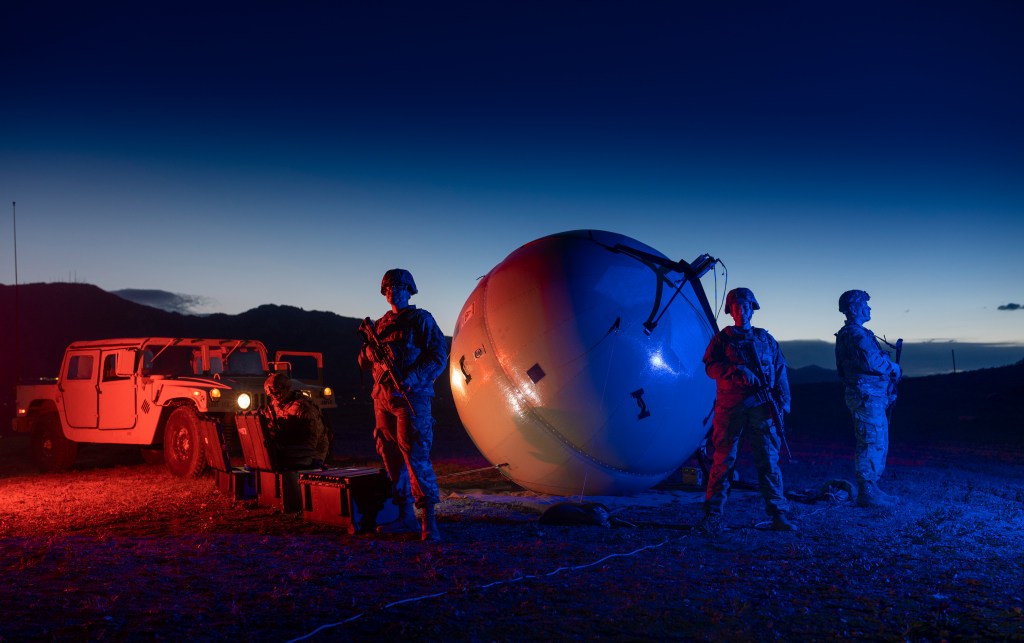
Soldiers in the new formations will focus on providing space capabilities — such as satellite communications, missile warning, intelligence, surveillance and reconnaissance — in support of ground forces operating at the tactical edge, according to Col. Peter Atkinson, principal space advisor at SMDC.
“What we’re seeing now is our formations requiring more of those low-density, high-demand skill sets. It’s incredibly difficult to maintain because they’re highly specialized,” Atkinson said in an interview with DefenseScoop on the sidelines of AUSA. “The training timelines for those are great. And so, when you’re looking at the human resources aspects of it, that piece is challenging.”
The Army has already established three MDTFs — two in the Pacific and one in Europe — and plans to activate two more over the next few years. According to the space vision, the MDTFs will be responsible for “employing Army space interdiction forces alongside cyber operations and electronic warfare enablers,” allowing them to destroy adversary space systems.
The service has already sent a provisional TSEG unit to U.S. Indo-Pacific Command to integrate into exercises and inform how SMDC will ultimately field the formation in 2027. The group was recently at Joint Warfighting Assessment 24 in Europe, during which the Army evaluated how the unit can augment the MDTF, Brooks said.
“One of the great things with the TSEG is the counter surveillance [and] reconnaissance capabilities that are bringing navigation warfare, along with the high-altitude assets that it can bring to the fight,” he said. “And it really does build that, not only capacity, but build additional capabilities to shape and influence.”
SMDC is also “aggressively pursuing” the establishment of a military occupational specialty for non-commissioned officers specific to space careers, as well as an Army space operations branch comprising the enlisted cohort, its current functional area officers and a potential warrant officer cohort, Brooks noted.
“We need an Army space operations career field and branch to produce and sustain the specialized, highly experienced and talented non-commissioned officer corps and officer cohort capable of integrating space across all warfighting functions and converging effects in support of maneuver operations,” he said.
Demand for new capabilities
As it grows the number of space personnel, the Army is also adding capabilities and equipment in alignment to the two new mission areas outlined in the space vision: integration with joint, coalition and commercial space capabilities, and interdiction against adversary space operations.
Atkinson told DefenseScoop it is imperative that the capability development and fielding is in line with the Army’s near-term growth plan for formations.
“Our goal is to make sure that they receive equipment as part of their activation, as part of their establishment,” he said. “So that alignment is what we’re focusing on right now, to make sure that we don’t have equipment on the shelf that could be waiting for a unit to be established, and then we don’t have units that are established without equipment.”
The service’s integration mission will include providing assured position, navigation and timing (PNT), deep sensing and reliable satellite communications, among others. While it keeps an eye on emerging technologies it can incorporate in the future, there are several prototypes for the integration mission the Army will field in the next few years, Atkinson noted.
A key challenge, however, will be scaling new space-based capabilities at relatively high volumes across the service. In many cases, the Army will require individual systems that can be fielded in the thousands — such as terminals needed for satellite communications, he added.
“The Army’s challenge with terminals is that we have too many, and it’s really hard to scale,” Atkinson said. “You’re talking about tens of thousands of individual terminals, each one unique to that satellite, that specific constellation — whether it’s military SATCOM, whether it’s commercial SATCOM.”
To mitigate delays in soldiers receiving new SATCOM capabilities, the Army is pursuing a hybrid terminal that can access multiple satellite constellations across orbital regimes. The service is hoping to leverage both military and commercial systems, Atkinson noted.
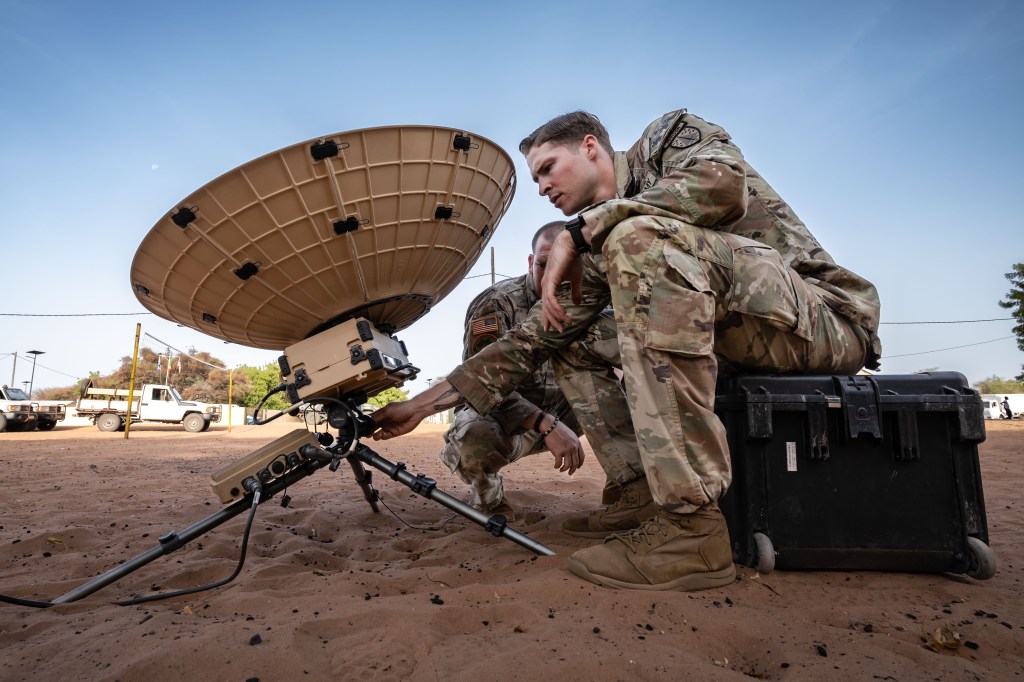
But for the Army’s new PNT capability, Atkinson said the fielding process is likely to be long. Developed by Collins Aerospace, the Mounted Assured Positioning, Navigation and Timing System (MAPS) and the dismounted variant known as DAPS are designed to give soldiers assured PNT in GPS-contested environments.
The department started initial fielding of the capability during fiscal 2024, and plans to begin scaling the system across the service in fiscal 2025, according to Atkinson.
“That is a long fielding process. That’s hundreds of thousands of individual items that the Army continues to upgrade to make sure that we have sound PNT,” he said.
Atkinson also highlighted the Army’s prototyping efforts for the Tactical Intelligence Targeting Access Node (TITAN), a ground station that will integrate data from multiple platforms across all domains to assist commanders in making sense of the battlefield.
The service awarded Palantir a $178.4 million other transaction agreement for TITAN in March, under which the company will deliver five “basic” and five “advanced” variants of the ground station over a two-year period.
For the Army’s space modernization efforts, the platform will give soldiers immediate access to space-based ISR at remote locations, Atkinson said.
“There is a tremendous amount of innovation happening with space-based ISR. We’re seeing it in commercial, we’re seeing it in industry and we’re seeing it across the [intelligence community],” he said. “So being able to harness that is going to be critical for the Army.”
The department has been more tight-lipped about specific systems it is developing for its interdiction mission, but they are considered offensive space control capabilities designed to deny adversaries the ability to use space for hostile purposes “by delivering necessary fires and effects at echelon to protect friendly forces from observation and targeting by counter-satellite communications, counter-surveillance and reconnaissance, and navigation warfare operations,” according to the space vision.
Atkinson said the service is trying to outpace emerging threats from China and Russia’s recent growth in the space domain. Although space control isn’t a new requirement, the threat is now pushing the Army to scale more tactical interdiction systems.
“The threat landscape has evolved significantly coming out of [counterinsurgency] and transitioning to great-power competition,” he said. “We have not been focused on a conflict with Russia and China, and when you look at their use of space capabilities, it really threatens our way of life, our way of war and our abilities.”
As the Army carves out its new role in the space domain, it’s working closely with the Space Force and others across the Pentagon to ensure there is no duplication of effort and that each service’s space capabilities complement each other.
“The Army’s not doing space for space,” Atkinson said. “There’s a direct requirement for the Army to protect its forces, to ensure that we can enable our moving maneuver and basic functions. And right now we can’t strip out all the requirements for space and cyberspace.”
